
Baron Hotham, of South Dalton in the County of York, is a title in the Peerage of Ireland. It was created in 1797 for the naval commander Admiral William Hotham, with remainder to the heirs male of his father. Hotham was the third son of Sir Beaumont Hotham, 7th Baronet, of Scorborough, and in 1811 he also succeeded his nephew as eleventh Baronet. Lord Hotham never married and on his death in 1813 he was succeeded in both titles by his younger brother Beaumont, the second Baron and twelfth Baronet. He had previously represented Wigan in the House of Commons.

Baron Savile, of Rufford in the County of Nottingham, is a title in the Peerage of the United Kingdom. It was created in 1888 for the diplomat Sir John Savile. He was the eldest of the five illegitimate children of John Lumley-Savile, 8th Earl of Scarbrough, and the grandson of John Lumley-Savile, 7th Earl of Scarbrough. The latter was the fourth of the seven sons of Richard Lumley-Saunderson, 4th Earl of Scarbrough, and his wife Barbara, sister and heiress of the politician Sir George Savile, 8th and last Baronet, of Thornhill, who bequeathed the substantial Savile estates in Yorkshire and Nottinghamshire to his nephew the Hon. Richard Lumley-Saunderson, later 6th Earl of Scarbrough. On his death the estates passed to his younger brother, the aforementioned seventh Earl, and then to his son the eighth Earl. The latter bequeathed the estates to his second natural son Captain Henry Lumley-Savile. When he died they passed to his younger brother Augustus William Lumley-Savile (1829–1887) and then to his eldest brother, the aforementioned John Savile, who was created Baron Savile the following year.
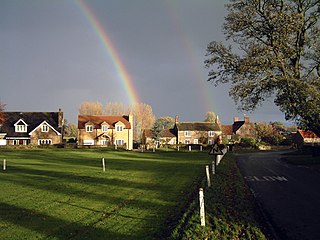
Thornton Watlass is a small village and civil parish in North Yorkshire, England. It is located north of Masham and south of Bedale on the eastern slopes of the Ure Valley at the entrance to Wensleydale and the Yorkshire Dales National Park. It is 11 miles (18 km) north of Ripon, 4 miles (6.4 km) from the A1(M) motorway, 11 miles (18 km) from the main railway line at Northallerton and 18 miles (29 km) from Teesside Airport. Its population was 180 in 2000, 190 in 2005, 224 in 2011 and 240 in 2016.
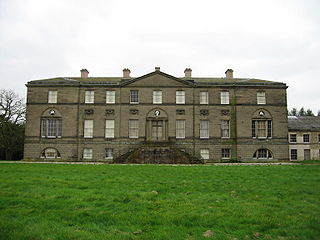
The Broughton, later Broughton-Delves, later Broughton Baronetcy, of Broughton in the County of Stafford, is a title in the Baronetage of England. It was created on 10 March 1661 for Sir Brian Broughton, of Broughton Hall, near Eccleshall, Staffordshire, High Sheriff of Staffordshire from 1660 to 1661 and the member of an ancient Staffordshire family.

There have been three baronetcies created for persons with the surname Croft, one in the Baronetage of England and two in the Baronetage of the United Kingdom. All three creations are extant as of 2008.
There have been four baronetcies created for persons with the surname Leslie, one in the Baronetage of Nova Scotia, one in the Baronetage of Ireland, one in the Baronetage of Great Britain and one in the Baronetage of the United Kingdom. Three of the creations are extant as of 2010.
Sir Richard Vanden-Bempde-Johnstone, 1st Baronet was a British Member of Parliament.
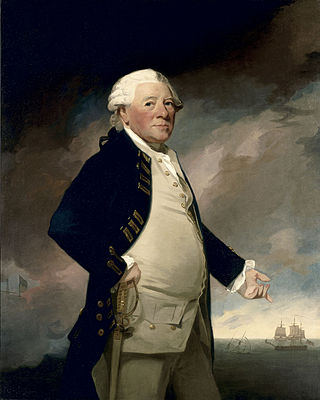
There have been seven baronetcies created for persons with the surname Parker, three in the Baronetage of England, two in the Baronetage of Great Britain and two in the Baronetage of the United Kingdom. Two of the creations are extant as of 2008. Though none of the different families of baronets were related, several supplied a number of flag officers to the Royal Navy.

There have been four baronetcies created for persons with the surname Sykes, two in the Baronetage of Great Britain and two in the Baronetage of the United Kingdom. Three of the creations are extant as of 2008.
There have been six baronetcies created for persons with the surname of Lawson, two in the Baronetage of England and four in the Baronetage of the United Kingdom. Two creations are extant as of 2010.
There have been two baronetcies created for persons with the surname Dugdale, both in the Baronetage of the United Kingdom.
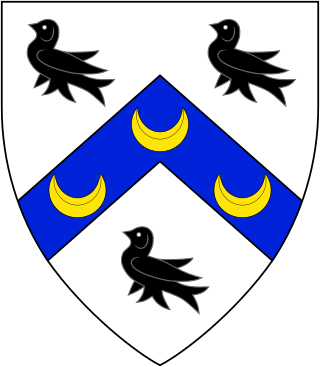
There have been seven baronetcies created for persons with the surname Watson, one in the Baronetage of England, one in the Baronetage of Great Britain and five in the Baronetage of the United Kingdom. One creation is extant as of 2016.
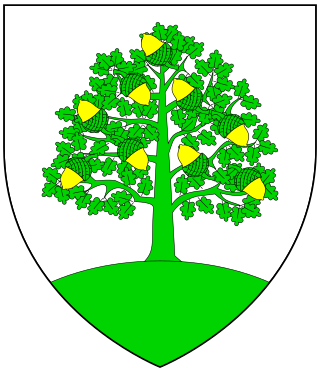
The Wood, later Page Wood Baronetcy, of Hatherley House in the County of Gloucester, is a title in the Baronetage of the United Kingdom. It was created on 16 December 1837 for Matthew Wood, Lord Mayor of London from 1815 to 1817 and Whig Member of Parliament for the City of London from 1817 to 1843. The fifth Baronet assumed the additional surname of Page. Two other members of the family have also gained distinction. William Wood, 1st Baron Hatherley, Lord High Chancellor of Great Britain from 1868 to 1872, was the second son of the first Baronet while Field Marshal Sir Evelyn Wood was the fifth son of the second Baronet. Also, Katharine O'Shea, known for her relationship with Charles Stewart Parnell, was the daughter of the second Baronet. The theosophist and political activist Annie Besant, was the great-granddaughter of the 1st Baronet's father.
There have been two baronetcies created for members of the Haggerston, later Constable Maxwell-Scott family, one in the Baronetage of England and one in the Baronetage of the United Kingdom. Only one creation is extant as of 2008. The Haggerston, later Constable Maxwell-Scott Baronetcy, of Haggerston in the County of Northumberland, was created in the Baronetage of England on 15 August 1642 for Thomas Haggerston, of Haggerton Castle, Northumberland, a loyal Royalist who served as a colonel in the army of King Charles I. The Haggerston were recusant in the 17th century and the estates were sequestered and forfeit to the Commonwealth of England in 1649 but were repurchased by the first Baronet in 1653. The line of the fourth Baronet failed on the death of the twelfth Baronet in 1972. The title reverted to the line of William Haggerston, second son of the third Baronet and younger brother of the fourth Baronet. In 1746 he inherited estates in Yorkshire from his great-uncle Sir Marmaduke Francis Constable, 4th and last Baronet, of Everingham, and assumed the surname of Constable in lieu of his patronymic. In 1758 he married Winifred, daughter of Robert Maxwell, titular sixth Earl of Nithsdale, and assumed by Royal licence the additional surname of Maxwell. Winifred was considered to be the heiress to the Scottish lordship of Herries of Terregles held by her father. Constable-Maxwell built a new house at Everingham Park on the Constable estate in Yorkshire.
There have been two baronetcies created for persons with the surname Coghill, both in the Baronetage of Great Britain. One creation is extant as of 2008.

The Baker, later Rhodes, later Baker Wilbraham Baronetcy, of Loventor in the County of Devon, is a title in the Baronetage of Great Britain. It was created on 19 September 1776 for George Baker, Physician to George III and President of the Royal College of Physicians. His son, Sir Frederick Francis Baker, 2nd Baronet, FRS was accidentally killed by the vane of a windmill. The fourth Baronet, assumed in 1878 by Royal licence the surname of Rhodes in lieu of his patronymic. He never married and was succeeded by his younger brother, the fifth Baronet. He married Katharine Frances, daughter and heiress of General Sir Richard Wilbraham, nephew of Edward Bootle-Wilbraham, 1st Baron Skelmersdale. In 1900 he assumed by Royal licence the additional surname of Wilbraham. His son, the sixth Baronet, served as First Church Estates Commissioner, as Chancellor of the Dioceses of York, Truro, Chelmsford and Durham and as Vicar-General of the Provinces of York and Canterbury. On his death the title passed to his son, the seventh Baronet. He was High Sheriff of Cheshire in 1963 and also a deputy lieutenant of the county. In 1980 the title passed to his son, Sir Richard Baker Wilbraham, the eighth Baronet, who was Deputy Lieutenant of Cheshire in 1992. Following his death in 2022, he was succeeded Sir Randle Baker Wilbraham, the current 9th Baronet.

The Smith, later Bromley, later Pauncefote-Bromley, later Bromley-Wilson, later Bromley Baronetcy, of East Stoke in the County of Nottingham, is a title in the Baronetage of Great Britain. It was created on 31 October 1757 for the banker George Smith, High Sheriff of Nottinghamshire from 1757 to 1759. He was the eldest son of Abel Smith I (1686–1756) of Nottingham, the 2nd son of Thomas Smith I (1631–1699), the founder of Smith's Bank in Nottingham. His younger brothers included: Abel Smith II (1717–1788) and John Smith, ancestor of Julian Pauncefote, 1st Baron Pauncefote.
There have been two baronetcies created for persons with the surname Ramsden, one in the Baronetage of England and one in the Baronetage of the United Kingdom. One creation is extant as of 2008

The Pilkington, later Milborne-Swinnerton-Pilkington Baronetcy, of Stanley in the County of York, is a title in the Baronetage of Nova Scotia. It was created on 29 June 1635 for Arthur Pilkington, along with a grant of 6,000 acres (24 km2) in Nova Scotia. The fifth Baronet was High Sheriff of Yorkshire for 1740–41 and sat as member of parliament for Horsham.
Thornton Watlass Hall is a large Grade I listed Georgian country house in Thornton Watlass, North Yorkshire, England, some 3 miles (5 km) north of Masham.












